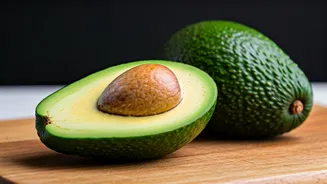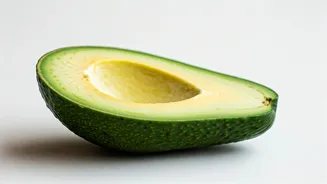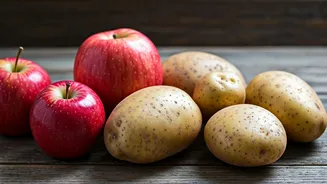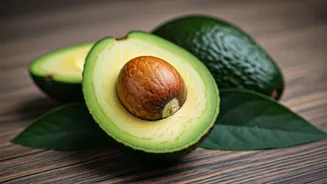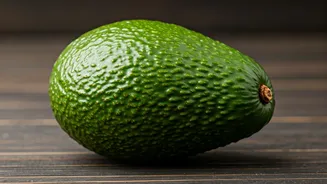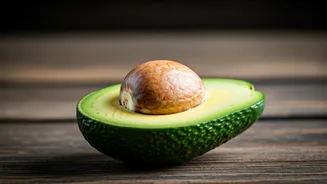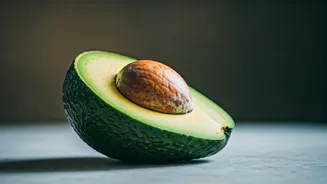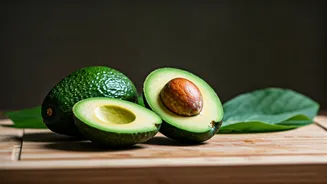Check the Skin
The avocado's skin is your primary source of information. The color provides an initial clue to ripeness, though it varies depending on the avocado variety.
For Hass avocados, the most common type, a dark green color indicates it is not ripe. As it ripens, the color transitions to a dark brown or nearly black. However, don't solely rely on color. The texture of the skin provides a vital clue. A smooth, unblemished skin means the avocado is likely unripe. Bumps and slight imperfections are common and don’t necessarily mean a bad avocado. Look for subtle give when you gently press the skin; this will indicate whether it is ripe or not. Avoid avocados with deep dents or bruises as this may mean that the avocado has been damaged.
The Stem Test
The stem area offers the most reliable ripeness test. Locate the small stem at the top of the avocado. Gently remove it – this is a crucial step! If the stem comes off easily and reveals a green interior, the avocado is ready to eat. A brown or dark-colored interior indicates the avocado is overripe or may have gone bad. If the stem is difficult to remove, the avocado might not be ripe yet; it may need a few more days to ripen on your counter. This simple test is a fail-safe method to check the ripeness, and prevent you from purchasing an avocado that is not yet ready to enjoy. Be sure to check the stem when you are selecting your avocado.
Feel the Fruit
Touch is another reliable indicator of ripeness. Gently hold the avocado in your palm and squeeze it softly. Ripe avocados should yield to gentle pressure. If the avocado feels very firm and hard, it is unripe and will need a few days to ripen. If it yields a little and feels firm, it is close to being ready. However, if the avocado feels too soft and mushy, it is overripe and may have brown spots inside. A ripe avocado should be firm, not rock-hard and not too soft; it should feel slightly soft when pressed. This simple test is a quick and effective way to evaluate an avocado's ripeness, and ensure you make the right choice when buying.
Consider the Variety
Different varieties of avocados, like Reed or Fuerte, may have different characteristics to consider. Reed avocados are round with green skin. They may soften slowly, and the skin doesn’t change color as the avocado ripens. Fuerte avocados have thinner skin and can be ready when the skin is still green. Researching common varieties can help you get a better idea of what to expect when checking for ripeness. If you're unsure, ask your local produce vendor for specific advice for the avocado variety you're buying. Knowing the variety of avocado helps guide your selection process.
Storage Solutions
If you buy an unripe avocado, store it at room temperature to speed up ripening. Placing the avocado in a brown paper bag with an apple or banana can accelerate the ripening process. The other fruits release ethylene gas, which promotes ripening. Once the avocado is ripe, you can store it in the refrigerator to slow down ripening for a few days. If you only use half the avocado, keep the remaining half by covering the cut surface with plastic wrap to prevent browning. Adding a squeeze of lemon or lime juice to the cut side will help keep it fresh, and add extra flavour.
